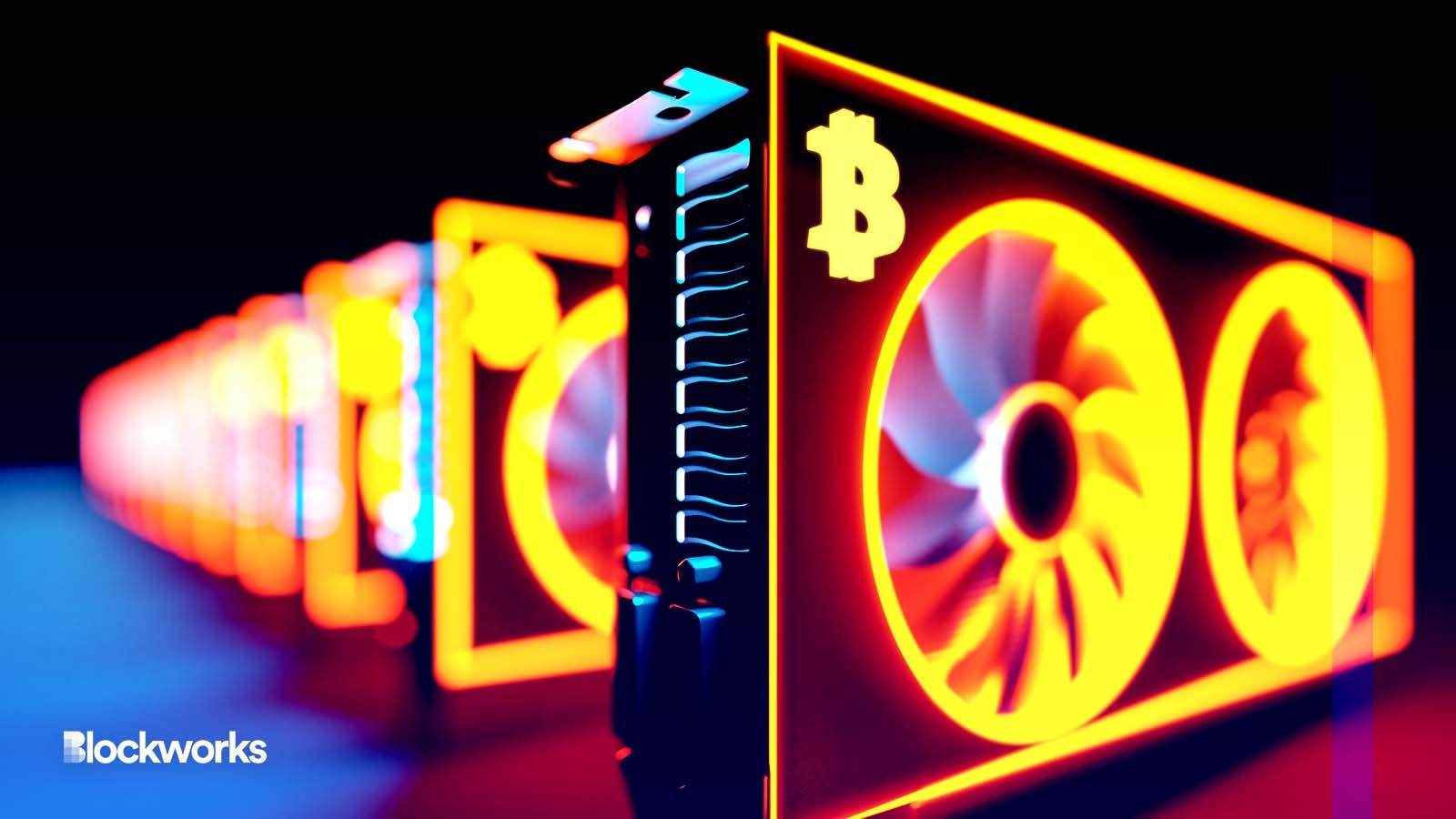Higher Bitcoin Transaction Fees Spur Good Month for Miners
CleanSpark’s normal bitcoin production nearly doubled during five-day stretch in May amid Ordinals-spurred fee increases

GreenBelka/Shutterstock modified by Blockworks
Several miners reported higher bitcoin production in May as a result of higher transaction fees that have since returned to more normal levels.
The Bitcoin network has been very active over the past month due to a surge in Ordinals and BRC-20 activity, according to Blockworks Research Analyst Spencer Hughes.
Ordinals, an NFT protocol that launched on Bitcoin mainnet in January, contributed to bitcoin transaction increases that started at the end of April.

“Speculators have been keen to mint any project that arises on Bitcoin and often set high transaction fees to prioritize their place in the mint process,” Hughes said. “As more centralized exchanges, such as Binance and OKX, add Ordinals support, it is possible that this trend is just warming up.”
Marathon Digital mined a record 1,245 bitcoins in May — up 77% month over month.
A “significant increase” in transaction fees accounted for roughly 11.8% of the total bitcoin the company earned last month, Marathon CEO Fred Thiel said in a statement.
“The emergence of Ordinals significantly increased transaction fees in May, which in some cases, were so high that they exceeded the 6.25 BTC block reward,” he added. “While such abnormally high transaction fees are historically rare, we believe these events can serve as a positive sign for the future of mining economics.”
CleanSpark too saw a boost in the amount of bitcoin mined last month, as its output jumped from 524 in April to 609 in May. The company said Friday it surpassed $100 million in year-to-date revenue.
CleanSpark CEO Zach Bradford said transaction fees were elevated because of increased interest in Ordinals for about five days in May. The company’s daily bitcoin production nearly doubled from 18 BTC to 30 BTC at the peak of this spike, but have since normalized.
Nishant Sharma, founder of bitcoin mining research and consulting firm BlocksBridge, told Blockworks: “Although the unusual on-chain acidity resulted only in a temporary surge in transaction fees, the event gave us a glimpse of the future when transaction fees form the major portion of rewards for miners.”
While higher transaction counts, block congestion and transaction urgency drove up fees paid to miners as high as 40% of total miner revenue in early May, the “speculative frenzy of ordinals/BRC-20 inscription” cooled off later in the month, Compass Point Research & Trading Analysts Chase White and Joe Flynn wrote in a May 26 research note.
Miner fee revenue had dropped back down to about 7% of total miner revenue at that point, they added.
“But we view ordinals/inscriptions as a positive development that has the potential to address long-term security concerns as it relates to the security of the BTC network and the incentivization of BTC miners, post halving events,” White and Flynn wrote.
Riot Platforms produced 676 BTC in May, which was roughly 6% higher than its generation of 639 BTC in April.
Core Scientific, a crypto mining company that filed for bankruptcy in December, self-mined 1,314 in May — up nearly 17% from April.
The two companies did not mention transaction fees in their monthly production reports. Spokesperson for the firms did not immediately return requests for comment.
Get the news in your inbox. Explore Blockworks newsletters:
- The Breakdown: Decoding crypto and the markets. Daily.
- 0xResearch: Alpha in your inbox. Think like an analyst.






